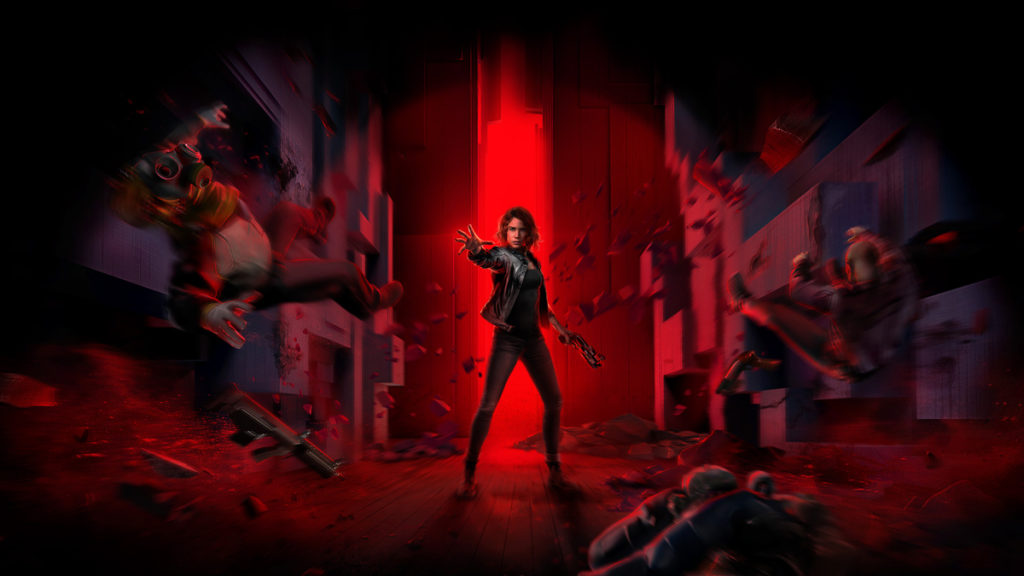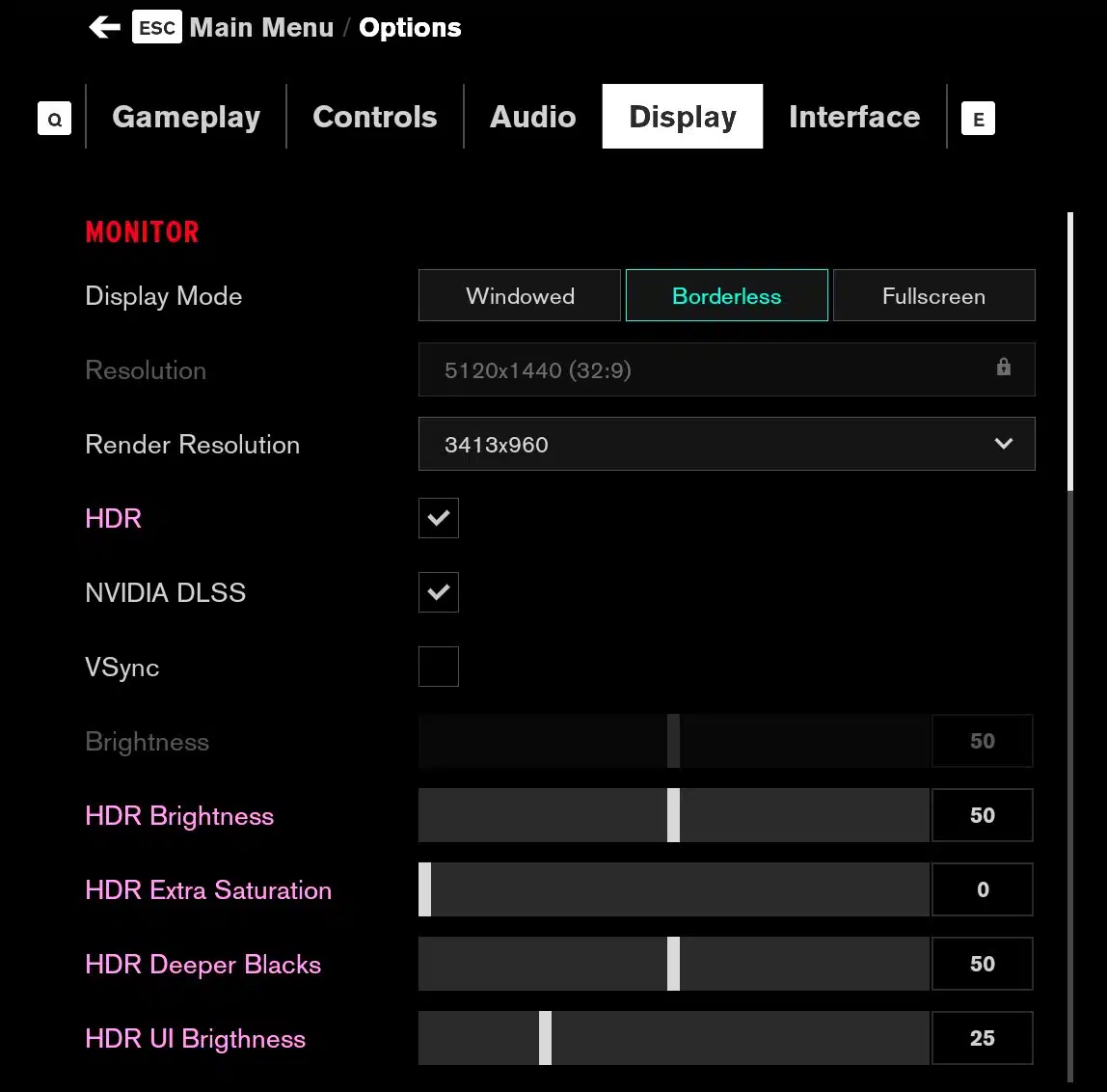
Remedy Entertainment’s Control was one of several games (Death Stranding, Metro Exodus, Shadow of the Tomb Raider) that served as essential poster children for incorporating DLSS and FSR, and later XeSS, technologies, but was oddly lacking in a couple of features often found in PC games, namely HDR and 32:9 support. Control initially launched with DLSS 1.0 which was locked to a very select amount of resolutions but eventually updated to DLSS 2.0 which allowed more options but 32:9 UW resolutions were still absent. Filippo Tarpini (via DSOG) has provided a new mod for Control that adds these and many other features.
The following screenshots are non-HDR but show off the mod’s 32:9 support. The mod’s author has provided a zipped 360 MB screenshot pack that includes HDR files in the .jxr format, which can be downloaded from here.



Some other notable additions for this new mod for Control are that DLSS has been updated to DLSS 2.5.1 and some users have reported it is compatible with FSR 2.1, fixes for FOV and LOD when using UW resolutions, unlocked using any resolution, and support for Intel Arc graphics cards. As when modding any game, users should create a backup before applying and there could be unexpected issues during gameplay.
Notes about the mod (via PCGaming Wiki)
About This File
This patch adds native HDR to Control. It was achieved by rebuilding the game with modified code and shaders.
This is built on top of my previous Ultrawide fix patch.
Compared to the latest official release version (0.0.344.1879), these are the improvements:
- Native HDR (improves color accuracy/banding, allows greater contrast and brighter highlights).
- Upgraded DLSS to 2.5.1 and improve its implementation (people reported this is compatible with FSR 2.1 injection)
- Added a new “Max” texture setting to improve the slow texture streaming.
- Full UltraWide support: unlock any resolution and aspect ratio, including 32:9+.
- Fixed UI issues at non-16:9 aspect ratios (e.g. enemy’s health bars were displaced).
- Some FOV and LOD fixes for UW.
- Improved window+borderless+fullscreen management.
- Fixed the game not launching correctly on non-Nvidia non-AMD GPUs (e.g. Intel Arc).
- Minor fixes and features around.
How does it work:
- Download your version of the patch (Steam, Epic Store, No DRM/GOG).
- Copy (with replace) all the files inside the Control install folder.
- Open the DX12 version of the game.
- You can turn on HDR either from Windows or from the game (on by default).
- The game will read the Windows 11 HDR calibration profile (app) and match its tone mapping to your screen capabilities.
- Using HGiG is suggested if your TV supports it (monitors usually default to HGiG).
- In the game settings, there are multiple HDR settings to tailor the image to your liking, though know that the HDR is already pre-calibrated to roughly match the SDR brightness.
Further details:
- You can swap between HDR and SDR from the game or Windows at any time. The game automatically changes.
- Further HDR settings are available in the “renderer.ini” file (after running the game once).
- config “m_fHDRMaxNitsOverride“: If you are incapable of creating an HDR calibration profile (e.g. Windows 10), set this to the nits max nits your screen supports (e.g. ~750 for LG CX).
- config “m_fHDRRaisedBlacksCorrection“: This makes the color correction LUT output black as black (instead of grey, depending on where you are).
- config “m_fHDRSaturation“: This artificially generates colors in the Rec.2020 space from the game’s internal Rec.709 image. Anything that is bright and saturated will shift to colors that don’t exist in SDR. This makes the game look more saturated, though it could also make it feel more “HDR”. Unreal Engine uses a similar technique.
- The HDR implementation skips the Reinhard tone mapper the game used in SDR. In my opinion, it made the image look overly flat, which was a choice dictated by the limitations of SDR. Removing it allows taking full advantage of HDR, by outputting an image with a much greater level of contrast, and without disadvantages to visibility.
Disabling the tone mapper in SDR is not the intent of this mod, so it will not be done. - The impact on performance should be minimal and within the 1-3% range.
- The game’s opening scene is likely the one that looks the worse in HDR due to some overly strong lights.
- HDR is only supported on the DX12 executable.
- There is no patch for the Microsoft Store version of the game.
- If for some reason you need to swap save files between game versions from different stores, you can find the directories here. You might also have to rename the internal save directory, e.g. from `Default-Generic-User` to `Default-Epic-User`.
Potential issues:
- This might have some glitch-looking pixels on some AMD cards. An investigation is ongoing.
- The Steam version might have troubles DLCs (some report they work). An investigation is ongoing.
- The game activates HDR on the desktop even when it’s disabled in the game settings. Just force disable it from Windows yourself. An update is coming to fix that.
- I haven’t tested the DX11 version on Windows 8.
- Occasionally the videos in the background of loading screens seem to get stuck. I haven’t been able to reproduce this reliably.
- Occasionally non ray traced reflections can shimmer. I haven’t been able to reproduce this reliably, it might also be in the vanilla game.
- DLSS has some minor trailing on reflections.
